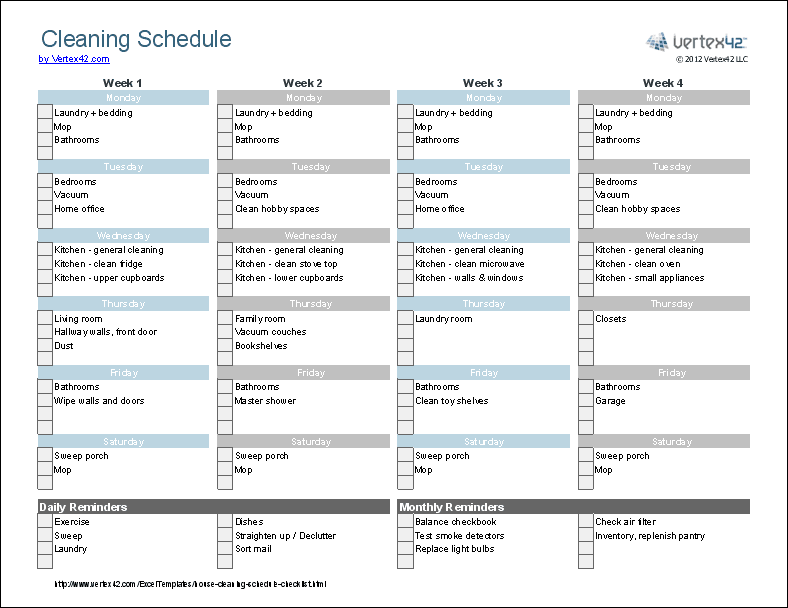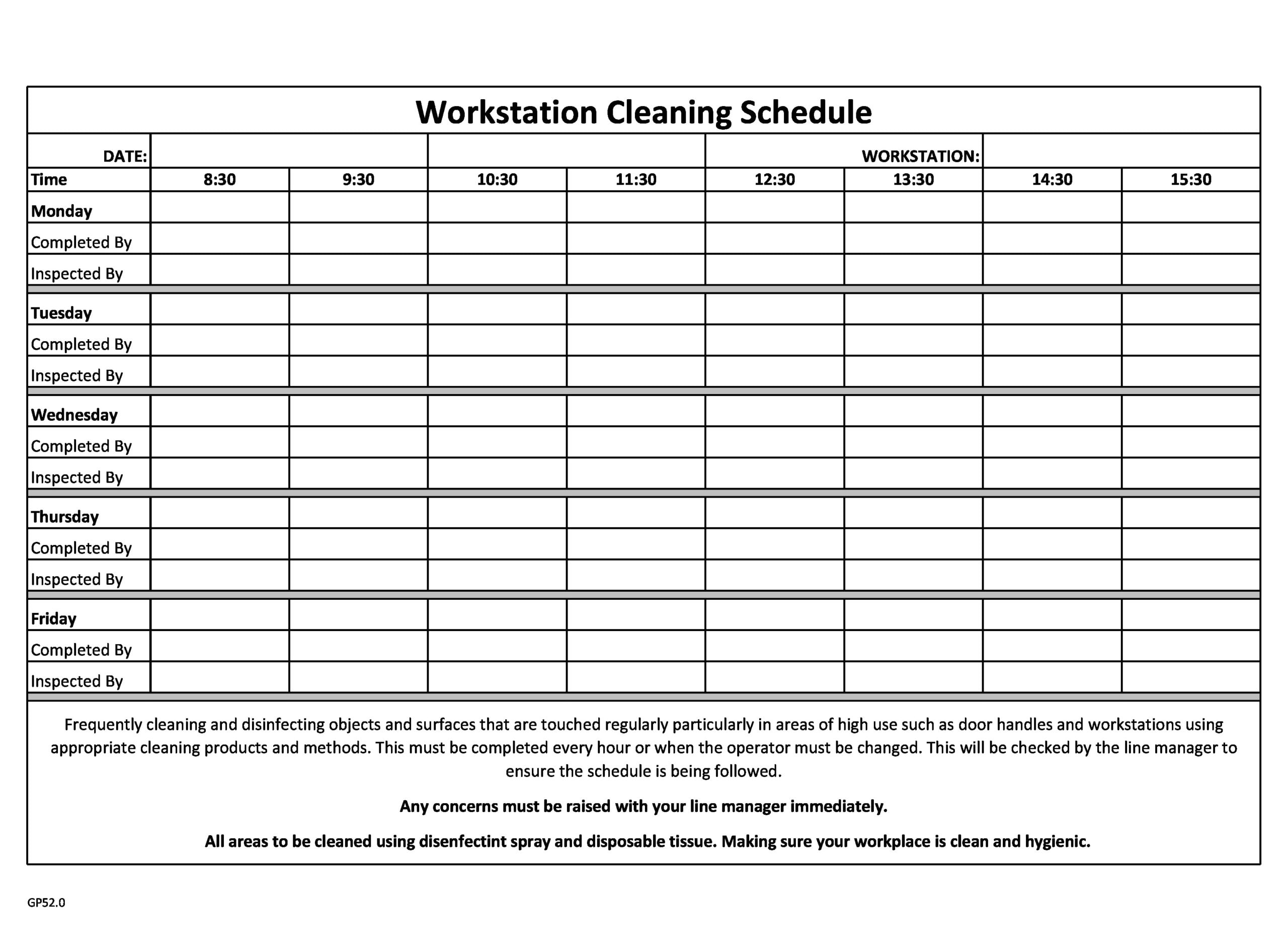Choosing the Right Tools and Supplies

Having the right cleaning tools and supplies is essential for creating an effective cleaning schedule. The right tools can make cleaning tasks easier, faster, and more efficient.
Choosing the Right Tools, How to create a cleaning schedule that works for you
The type of cleaning tools you need will depend on the specific tasks you are tackling. For example, a mop is ideal for cleaning floors, while a duster is better for cleaning surfaces. Here are some essential cleaning tools:
- Mop: A mop is a cleaning tool used for cleaning floors. It consists of a handle and a head that is attached to a cleaning pad. Mops can be made from various materials, including cotton, microfiber, and sponge.
- Broom: A broom is a cleaning tool used for sweeping floors. It consists of a handle and a head with bristles. Brooms can be made from various materials, including straw, plastic, and nylon.
- Vacuum cleaner: A vacuum cleaner is a cleaning tool used for removing dirt, dust, and debris from floors, carpets, and upholstery. It consists of a motor, a suction hose, and a cleaning head.
- Duster: A duster is a cleaning tool used for removing dust from surfaces. It consists of a handle and a head with a soft material, such as microfiber or feather.
- Sponges: Sponges are cleaning tools used for cleaning surfaces, dishes, and other items. They are made from a variety of materials, including cellulose, polyurethane, and melamine.
- Cleaning cloths: Cleaning cloths are cleaning tools used for wiping surfaces, drying dishes, and other cleaning tasks. They are made from a variety of materials, including microfiber, cotton, and linen.
- Bucket: A bucket is a cleaning tool used for holding water, cleaning solutions, and other cleaning supplies.
- Trash can: A trash can is a cleaning tool used for collecting and disposing of garbage.
Choosing the Right Cleaning Products
The type of cleaning products you need will depend on the surfaces you are cleaning and the type of dirt or grime you are trying to remove. It is essential to choose products that are effective and safe for use in your home. Here are some common cleaning products and their benefits and drawbacks:
- All-purpose cleaners: All-purpose cleaners are designed to clean a variety of surfaces, including countertops, floors, and appliances. They are generally safe for use on most surfaces, but it is always a good idea to test them in an inconspicuous area first.
- Disinfectants: Disinfectants are designed to kill bacteria and viruses. They are often used in kitchens and bathrooms to sanitize surfaces. However, some disinfectants can be harsh on surfaces, so it is important to follow the manufacturer's instructions carefully.
- Glass cleaners: Glass cleaners are designed to clean glass surfaces, such as windows, mirrors, and picture frames. They are generally safe for use on glass, but they can leave streaks if not applied correctly.
- Floor cleaners: Floor cleaners are designed to clean floors, such as hardwood, tile, and linoleum. They are generally safe for use on floors, but it is important to choose a cleaner that is compatible with your floor type.
- Carpet cleaners: Carpet cleaners are designed to clean carpets and rugs. They can be used to remove stains, dirt, and pet hair. Some carpet cleaners are available as sprays, while others are available as machines.
- Furniture polish: Furniture polish is designed to clean and protect furniture. It can help to remove dust and fingerprints and add a shine to the surface. However, some furniture polishes can leave a greasy residue, so it is important to choose a polish that is compatible with your furniture type.
Making it a Habit

Creating a cleaning schedule is a great first step, but the real magic happens when you turn it into a habit. Sticking to your schedule consistently leads to a cleaner home, less stress, and more free time to enjoy the things you love.
Staying Motivated and Avoiding Procrastination
Motivation is key to making your cleaning schedule a part of your daily life. Here are some strategies to help you stay on track:
- Set realistic goals. Don't try to tackle everything at once. Start with small, achievable tasks and gradually increase the workload as you build momentum. For example, instead of aiming to clean the entire house in one day, focus on cleaning the bathroom on Monday, the kitchen on Wednesday, and the living room on Friday. This makes the process feel less daunting and helps you avoid feeling overwhelmed.
- Break down large tasks. Cleaning the entire house might seem like an overwhelming task, but breaking it down into smaller, manageable steps can make it feel more achievable. For instance, instead of cleaning the entire bathroom in one go, focus on cleaning the sink and countertop one day, the toilet the next, and the shower on another day.
- Reward yourself. Celebrate your accomplishments, no matter how small they may seem. After completing a cleaning task, treat yourself to a cup of coffee, a relaxing bath, or a few minutes of your favorite show. This positive reinforcement will help you stay motivated and keep moving forward.
- Make it a social activity. Invite a friend or family member to join you in cleaning. Working together can make the task more enjoyable and help you stay accountable.
- Listen to music or podcasts. Make cleaning time more enjoyable by listening to your favorite music or podcasts. This can help distract you from the chore and make the time pass more quickly.
Tracking Your Progress and Celebrating Your Accomplishments
It's important to track your progress to see how far you've come and to stay motivated. Here are some ways to track your cleaning routine:
- Use a cleaning checklist. Create a checklist of all the cleaning tasks you need to complete each week or month. Check off the tasks as you complete them. This provides a visual representation of your progress and helps you stay organized.
- Use a calendar. Mark specific cleaning days on your calendar to remind yourself when to tackle certain tasks. This can help you stay on track and avoid procrastination.
- Take before-and-after photos. Take photos of the areas you've cleaned before and after you've completed the tasks. This visual comparison can be motivating and help you see the difference you've made.
- Reward yourself. As you achieve your cleaning goals, reward yourself with something you enjoy. This could be a new book, a movie night, or a relaxing spa day. This positive reinforcement will help you stay motivated and continue to make progress.
Adjusting and Improving: How To Create A Cleaning Schedule That Works For You

A cleaning schedule, like any other system, needs regular evaluation and adjustments to ensure it remains effective and aligns with your evolving needs. As your life changes, so too should your cleaning schedule to maintain its effectiveness.
Strategies for Making Adjustments
Adjusting your cleaning schedule involves identifying areas for improvement and making strategic changes. The following strategies can help you refine your schedule:
- Evaluate Your Current Schedule: Start by reviewing your current schedule. Identify tasks that take longer than anticipated, those you find challenging, and areas where you feel overwhelmed. Consider the frequency of tasks and whether they need to be done as often. For instance, if you find that vacuuming once a week is sufficient, you might consider reducing it to bi-weekly.
- Prioritize Tasks: Prioritize tasks based on their importance and urgency. Essential tasks, like laundry and dishes, should be done regularly. Less urgent tasks, like decluttering, can be done less frequently.
- Delegate Tasks: If you have family members or roommates, consider delegating tasks to share the workload. Even small contributions can significantly lighten your load.
- Utilize Technology: There are numerous apps and online tools available to help you manage your cleaning schedule. These tools can provide reminders, track progress, and offer suggestions for improvement.
Tips for Staying Flexible
Life is unpredictable, and sometimes your cleaning schedule needs to be adjusted on the fly. The following tips can help you stay flexible and adapt to unexpected situations:
- Be Realistic: Don't set unrealistic expectations for yourself. It's okay to skip a task or two if you're feeling overwhelmed.
- Embrace Flexibility: Be willing to adjust your schedule as needed. If you have a busy week, you might need to reschedule some tasks.
- Don't Be Afraid to Ask for Help: If you're struggling to keep up with your cleaning, don't hesitate to ask for help from family, friends, or a professional cleaning service.
Frequently Asked Questions
How to create a cleaning schedule that works for you - What if I don't have a lot of time?
Start small. Focus on one or two key tasks each day, like making your bed and wiping down the kitchen counters. You can gradually add more tasks as you become more comfortable with the routine.
How do I stay motivated?
Set realistic goals, break down large tasks into smaller ones, and reward yourself for your efforts. You can also listen to music, podcasts, or audiobooks while you clean to make the time go by faster.
What if I miss a day or two?
Don't beat yourself up! Just pick up where you left off and get back on track. Life happens, and it's okay to adjust your schedule as needed.
